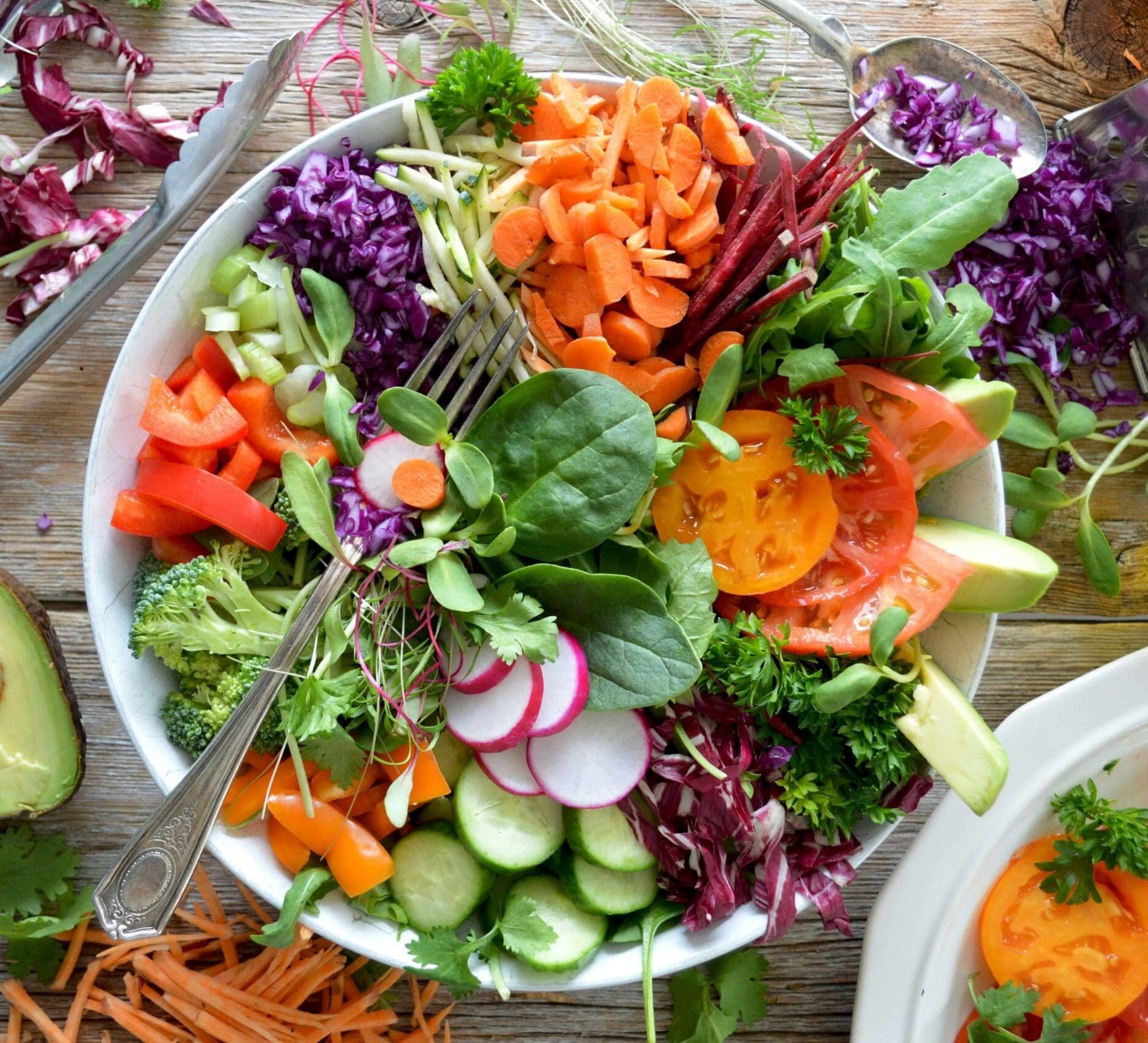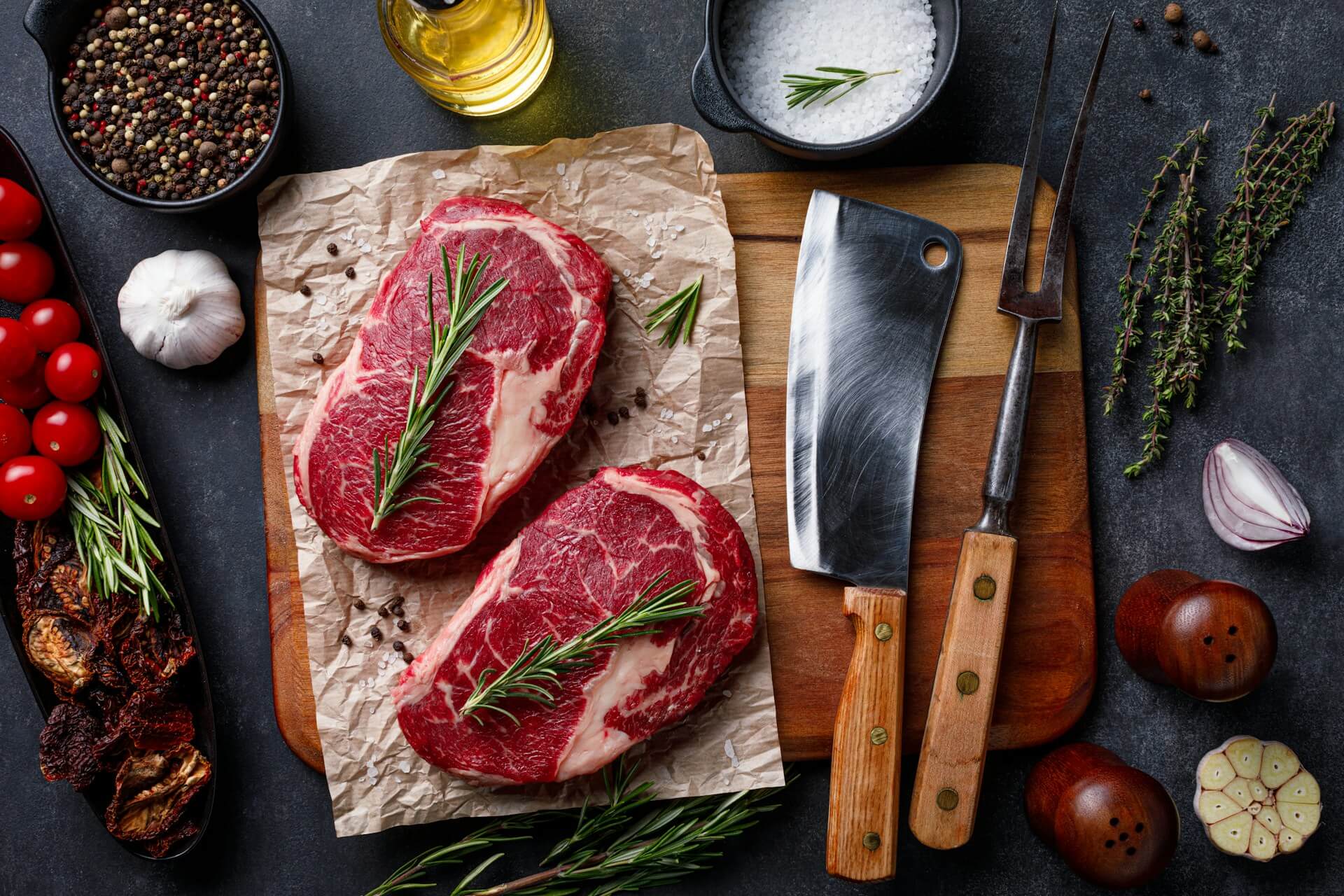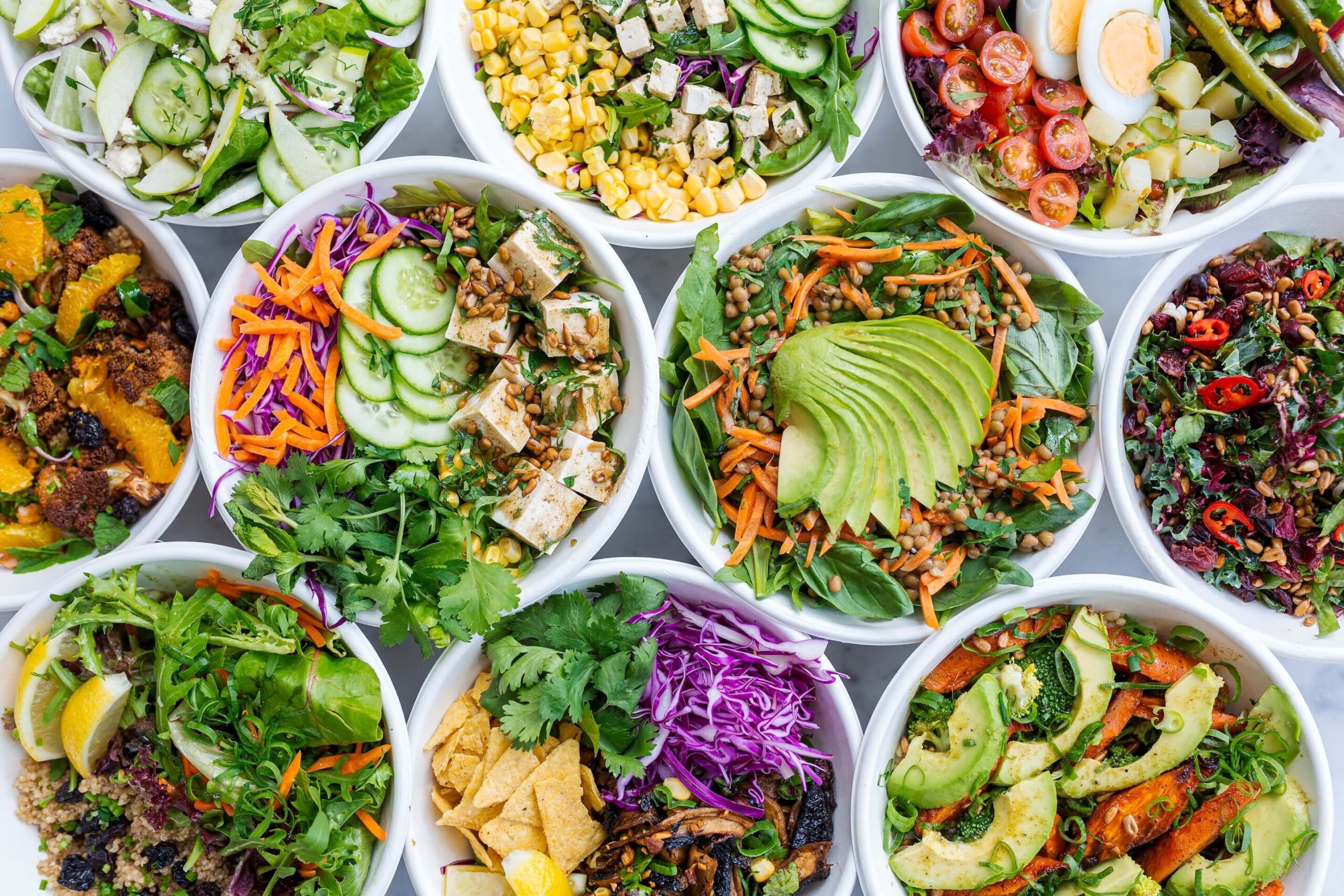Cancer treatment demands extra nutrition support for healing and recovery. Your body needs 25-50% more calories and protein during active treatment compared to normal requirements. Proper nutrition helps maintain strength, prevents weight loss, and reduces treatment side effects that can compromise your recovery journey.
This comprehensive weekly meal plan provides balanced nutrition through 5-6 small meals daily rather than three large ones. Each day includes high-protein options, calorie-dense foods, and easy-to-digest choices that work around your common side effects that can arise during treatment like nausea or taste changes.
It has been carefully crafted to also follow food safety guidelines essential for survivors that are immunocompromised, while maintaining variety and flavor to keep your meals tasty and fun!
To make this easier, I created a download of this 7-Day Meal Plan for Cancer Patients: Complete Nutrition Guide for Treatment and Recovery. Download your copy here.
Understanding Nutritional Needs During Cancer Treatment
Cancer patients require specialized nutrition because treatment increases metabolic demands significantly. The body burns more calories fighting cancer and healing from treatment than during normal activities.
Memorial Sloan Kettering experts report that without adequate nutrition, the body breaks down muscle tissue for energy instead of fat reserves, leading to dangerous muscle wasting and weakness.
Chemotherapy, radiation, and surgery all damage healthy cells alongside cancer cells. Repairing this damage requires extra protein typically 1.5 grams per kilogram of body weight daily compared to 0.8 grams for healthy adults.
A 150-pound person needs approximately 102 grams of protein daily during treatment versus 54 grams normally.
Why Do Cancer Patients Need Special Nutrition Plans?
Standard healthy eating guidelines don’t apply during cancer treatment. While typical nutrition advice emphasizes fruits, vegetables, and limiting fats, cancer patients need calorie-dense foods regardless of traditional health rankings. The priority shifts from long-term disease prevention to immediate energy and healing support.
Treatment side effects pose unique challenges requiring dietary modifications. 40% of newly diagnosed patients change eating habits due to treatment effects. Taste changes, mouth sores, nausea, and fatigue all impact food choices and appetite. Research published in PMC indicates that 15-40% of cancer patients experience nutritional deficiency, which negatively impacts quality of life and treatment completion rates.
Increased Protein and Calorie Requirements
Protein needs to jump substantially during treatment to support tissue repair and immune function. MD Anderson Cancer Center recommends consuming 25-30 grams of protein per meal for optimal absorption. This equals roughly one chicken breast, cup of Greek yogurt with nuts, or protein shake per eating occasion.
Calorie requirements increase by 20-30% above baseline needs. Someone normally eating 2,000 calories daily may need 2,400-2,600 calories during treatment. Meeting these needs prevents dangerous weight loss and preserves muscle mass essential for recovery.
Managing Treatment Side Effects Through Diet
Strategic food choices minimize treatment side effects effectively. Johns Hopkins Medicine identifies specific foods for common problems:
- Nausea: Ginger tea, peppermint, citrus fruits, crackers
- Dry mouth: Smoothies, soups, sauces, ice chips
- Taste changes: Strong flavors, marinades, lemon juice
- Fatigue: Small frequent meals, protein-rich snacks
- Diarrhea: Bananas, rice, toast, electrolyte drinks
- Constipation: High-fiber foods, prune juice, plenty of fluids
Role of Me as Your Registered Dietitian in Cancer Care
Working with an oncology dietitian optimizes nutritional outcomes during treatment. Cancer Support Community research shows patients who receive dietitian support maintain weight better and experience fewer complications.
I create personalized plans addressing specific treatment protocols, side effects, and food preferences. So If you’re ready to stop guessing and get expert guidance tailored to you, apply for VIP 1:1 oncology nutrition coaching with me today.
Complete 7-Day Meal Plan for Cancer Patients
This meal plan provides 2,400-2,600 calories and 100+ grams protein daily through six eating occasions. Portions adjust based on individual tolerance and appetite. All foods follow safety guidelines for immunocompromised patients.
Make sure you grab the step-by-step, done-for-you meal plan that puts all these strategies into action The Clear Scan Plan: 7-Day Meal Plan for Cancer Patients. [Get it here].
Day 1: Monday Menu
- Breakfast (400 calories, 20g protein): Scrambled eggs (2) with cheese, white toast with butter, 8oz orange juice
- Morning Snack (250 calories, 15g protein): Greek yogurt with honey and granola
- Lunch (450 calories, 25g protein): Chicken noodle soup with extra noodles, saltine crackers, applesauce cup
- Afternoon Snack (350 calories, 15g protein): Peanut butter sandwich on white bread, 8oz whole milk
- Dinner (500 calories, 30g protein): Baked salmon with lemon butter, mashed potatoes with gravy, cooked green beans
- Evening Snack (350 calories, 13g protein): Ensure Plus or homemade protein shake with banana
Day 2: Tuesday Menu
- Breakfast: French toast (3 slices) with syrup and butter, turkey sausage links, apple juice
- Morning Snack: String cheese and graham crackers
- Lunch: Turkey and avocado wrap with mayo, cream of mushroom soup, vanilla pudding
- Afternoon Snack: Trail mix with dried fruit and roasted nuts
- Dinner: Meatloaf with gravy, sweet potato with butter, steamed broccoli with cheese sauce
- Evening Snack: Ice cream with protein powder mixed in
Day 3: Wednesday Menu
- Breakfast: Oatmeal with protein powder, sliced banana, brown sugar, and whole milk
- Morning Snack: Cottage cheese with canned peaches
- Lunch: Grilled cheese sandwich, tomato soup, chocolate milk
- Afternoon Snack: Hummus with pita bread
- Dinner: Chicken parmesan over pasta, Caesar salad (no raw egg), garlic bread
- Evening Snack: Boost nutritional drink and cookies
Day 4: Thursday Menu
- Breakfast: Pancakes with butter and syrup, scrambled egg, orange juice
- Morning Snack: Apple slices with almond butter
- Lunch: Tuna melt sandwich, potato chips, fruit cocktail
- Afternoon Snack: Cheese and crackers with grapes
- Dinner: Beef stir-fry with vegetables over white rice, egg roll
- Evening Snack: Milkshake made with ice cream and protein powder
Day 5: Friday Menu
- Breakfast: Breakfast burrito with eggs, cheese, and sausage, hash browns
- Morning Snack: Yogurt parfait with granola
- Lunch: Chicken quesadilla with sour cream and guacamole, refried beans
- Afternoon Snack: Protein bar and apple juice
- Dinner: Baked cod with butter, quinoa pilaf, roasted carrots
- Evening Snack: Peanut butter toast with honey
Day 6: Saturday Menu
- Breakfast: Waffles with strawberries and whipped cream, bacon strips
- Morning Snack: Mixed nuts and dried cranberries
- Lunch: Minestrone soup with extra beans, breadsticks, Jell-O
- Afternoon Snack: Deviled eggs (2 whole eggs)
- Dinner: Turkey pot pie, mashed cauliflower with butter, dinner roll
- Evening Snack: Carnation Instant Breakfast made with whole milk
Day 7: Sunday Menu
- Breakfast: Eggs Benedict (fully cooked), home fries, orange juice
- Morning Snack: Banana bread with cream cheese
- Lunch: BLT sandwich with mayo, cream of chicken soup, pudding cup
- Afternoon Snack: Smoothie with yogurt, berries, and protein powder
- Dinner: Roast chicken with stuffing, mashed potatoes, corn, cranberry sauce
- Evening Snack: Angel food cake with whipped cream and berries
Make sure you grab this done-for-you meal plan that puts all these strategies into action, grab my free resource: The Clear Scan Plan: 7-Day Meal Plan for Cancer Patients. [Get it here].
Foods to Include in a Cancer Patient’s Diet
Building meals around nutrient-dense, high-calorie foods ensures adequate nutrition despite reduced appetite. Focus on foods providing maximum nutrition in small portions. American Cancer Society guidelines emphasize protein and calorie density over volume.
High-Protein Foods for Healing and Recovery
Protein sources should appear in every meal and snack. Eggs provide 6-7 grams of protein each and work scrambled, hard-boiled, or in smoothies. Lean meats like chicken, turkey, and fish offer complete proteins with all essential amino acids.
Animal protein sources include:
- Chicken breast (25g protein per 3 ounces)
- Salmon (22g protein per 3 ounces)
- Lean beef (22g protein per 3 ounces)
- Turkey (24g protein per 3 ounces)
- Tuna (20g protein per 3 ounces)
Plant-based proteins include:
- Beans and lentils (15-18g per cup)
- Nut butters (7-8g per 2 tablespoons)
- Tofu (10g per half cup)
- Quinoa (8g per cup cooked)
- Hemp seeds (10g per 3 tablespoons)
Dairy and Egg Products
Dairy products provide protein plus calcium for bone health. Greek yogurt contains 15-20 grams protein per serving, double that of regular yogurt. Choose whole milk products for extra calories – whole milk provides 150 calories per cup versus 80 in skim milk. Cheese adds protein and calories to any meal.
Nutrient-Dense Fruits and Vegetables
Colorful produce provides antioxidants, vitamins, and phytonutrients supporting immune function. UCSF research recommends choosing seasonal options for maximum nutrition. Berries contain powerful antioxidants – studies show breast cancer survivors eating berries twice weekly had 25% better survival rates.
Antioxidant-Rich Choices
Dark, colorful fruits and vegetables provide the most antioxidants. Blueberries, blackberries, and pomegranates top the list. Dark leafy greens like spinach and kale offer iron and folate. Orange vegetables including sweet potatoes and carrots provide beta-carotene for immune support.
Easy-to-Digest Options
Well-tolerated produce includes:
- Cooked carrots, sweet potatoes, squash
- Banana, melon, peeled apples
- Well-cooked spinach or kale in soups
- Avocado for healthy fats and calories
- Vegetable juices for concentrated nutrition
- Applesauce and canned fruits in juice
Whole Grains and Complex Carbohydrates
Whole grains provide sustained energy and B vitamins essential for healing. During digestive distress, refined grains like white rice or bread digest easier than whole grains. Oatmeal offers 6 grams protein per cup plus soluble fiber for digestive health.
Best grain choices:
- Brown rice, quinoa, barley
- Whole grain pasta and bread
- Crackers for nausea management
- Hot cereals with added protein powder
- Granola for calorie density
Healthy Fats and Calorie-Dense Foods
Fats provide concentrated calories 9 calories per gram versus 4 for protein or carbohydrates. Include healthy fats at each meal to boost calorie intake. Olive oil, nuts, seeds, and fatty fish provide omega-3 fatty acids that reduce inflammation.
High-Calorie and High-Protein Strategies
Meeting nutritional needs requires creative calorie additions. Every bite should provide maximum nutrition when appetite remains limited.
Nutritional Supplements and Shakes
Commercial supplements provide complete nutrition in small volumes. One bottle of Ensure Plus contains 350 calories and 13 grams protein. Make homemade shakes with whole milk or ice cream base, protein powder (20-30g per scoop), nut butter (190 calories per 2 tablespoons), banana or berries for vitamins, and ground flax for omega-3 fatty acids.
Calorie-Boosting Additions to Meals
Simple additions increase calories without adding bulk:
- Butter or oil: 100 calories per tablespoon
- Cheese: 100 calories per ounce
- Avocado: 320 calories per fruit
- Nuts: 170 calories per ounce
- Dried fruit: 130 calories per quarter cup
- Honey or maple syrup: 60 calories per tablespoon
Small, Frequent Meals Approach
Eating every 2-3 hours maintains energy and prevents overwhelming full feelings. Set phone alarms as eating reminders. Keep portable snacks available – protein bars, trail mix, cheese sticks. Medicine cups help consume liquid supplements gradually throughout the day.
Hydration Tips and Fluid Intake
Proper hydration supports all body functions during treatment. Aim for 64-80 ounces of fluid daily unless restricted by the medical team. Count all liquids – water, juice, milk, soup, ice cream. Add flavor to water with lemon, cucumber, or berries to increase appeal. Electrolyte drinks replace minerals lost through vomiting or diarrhea.
Foods to Avoid During Cancer Treatment
Food safety becomes critical when treatment weakens immune systems. NCI guidelines specify avoiding foods with higher contamination risks. Neutropenia affects 50% of chemotherapy patients, making bacterial infections from food particularly dangerous.
Raw and Undercooked Foods Restrictions
Avoid all raw or undercooked animal products during treatment:
- Sushi, rare meat, runny eggs
- Raw cookie dough or cake batter
- Unpasteurized honey (may contain botulism spores)
- Raw sprouts (alfalfa, bean, radish)
- Unwashed raw vegetables and fruits
Special Considerations and Modifications
Individual needs vary based on treatment type, side effects, and personal preferences. Work with registered dietitians for personalized plans addressing specific requirements.
Neutropenic Diet Guidelines
When neutrophil counts drop below 500 cells/mm³, follow strict food safety protocols. MD Anderson guidelines focus on proper food handling over food restriction. Most cancer centers now emphasize FDA food safety guidelines rather than eliminating specific foods entirely.
Key neutropenic diet principles:
- No raw or undercooked animal products
- Thoroughly wash all produce
- Avoid buffets and salad bars
- Choose commercially packaged items over bulk bins
- Heat leftovers to steaming (165°F)
Soft and Bland Food Options
Mouth sores or swallowing difficulties require texture modifications. Puree foods in blenders, adding broth or milk for thinning. Soft options providing adequate nutrition include smoothies, scrambled eggs, yogurt, mashed potatoes, well-cooked pasta with sauce, and cream-based soups.
Vegetarian and Vegan Adaptations
Plant-based diets during cancer treatment require careful planning to meet protein needs. Combine complementary proteins – rice with beans, peanut butter with whole grain bread. Include fortified plant milks for calcium and vitamin D. Consider protein powders made from pea, soy, or hemp proteins.
Cultural and Personal Preferences
Comfort foods from cultural backgrounds often appeal when appetite wanes. World Cancer Research Fund encourages incorporating familiar flavors while maintaining food safety. Modify traditional recipes as needed – use pasteurized ingredients, cook foods thoroughly, and adjust textures for easier consumption.
Ending Thoughts
Proper nutrition during cancer treatment supports healing, maintains strength, and improves treatment tolerance. This 7-day meal plan provides the framework for meeting increased nutritional needs while managing side effects. Remember that flexibility remains important eat what appeals when appetite appears, focusing on calories and protein over perfect nutrition.
Work closely with your healthcare team to adjust this plan based on your specific needs and treatment protocol. Regular monitoring by registered dietitians ensures nutritional goals are met throughout your cancer journey. With proper planning and support, maintaining adequate nutrition during treatment becomes manageable, supporting your body’s ability to fight cancer and recover successfully.
Your next step is to save this exact 7 day cancer survivor meal plan in a convenient PDF, my free resource gives you the full guide plus preparation tips and strategies for recovery. When you download it, you’ll also join my email list. This is where I share updates on my 1:1 coaching openings, which come up a couple of times per month.
References
- https://www.cancer.gov/about-cancer/treatment/side-effects/nutrition
- https://www.mskcc.org/cancer-care/patient-education/eating-well-during-your-treatment
- https://www.ncbi.nlm.nih.gov/pmc/articles/PMC6339658
- https://www.mdanderson.org/cancerwise/6-easy-protein-sources-for-cancer-patients.h00-159699912.html
- https://www.hopkinsmedicine.org/health/conditions-and-diseases/cancer/cancer-diet-foods-to-add-and-avoid-during-cancer-treatment
- https://www.wcrf.org/living-well/eating-well/recipes-for-cancer-patients
- https://www.mdanderson.org/cancerwise/neutropenic-diets–what-cancer-patients-should-know.h00-159542112.html
- https://www.cancer.gov/about-cancer/treatment/side-effects/appetite-loss/nutrition-pdq
- https://osher.ucsf.edu/patient-care/integrative-medicine-resources/cancer-and-nutrition/7-day-sample-meal-plan
- https://www.cancer.org/cancer/survivorship/coping/nutrition/once-treatment-starts.html
- https://www.cancersupportcommunity.org/diet-nutrition-during-cancer-treatment





